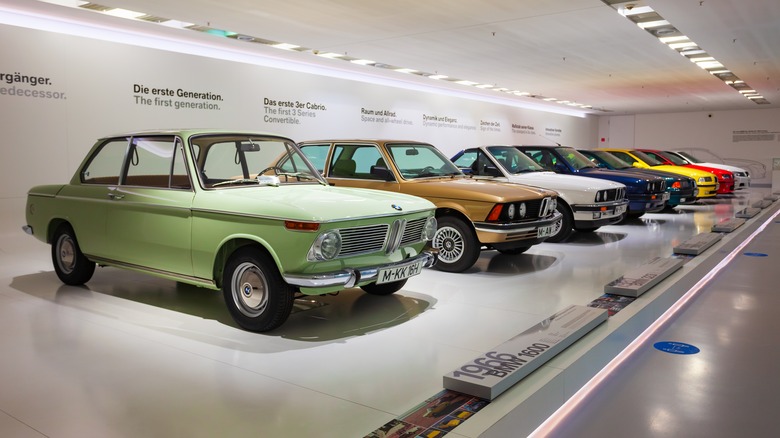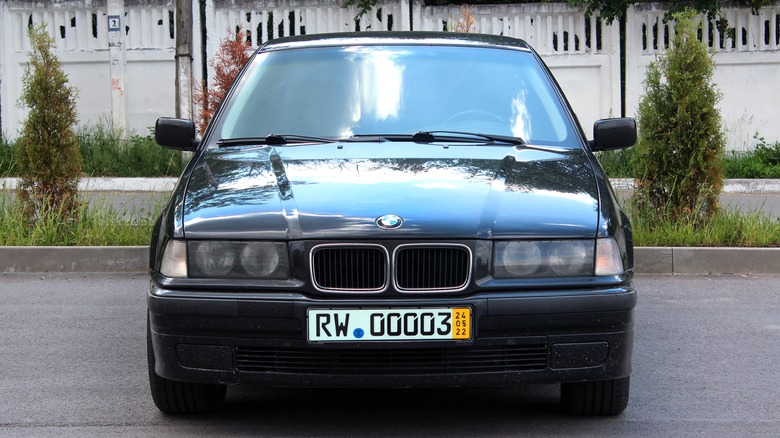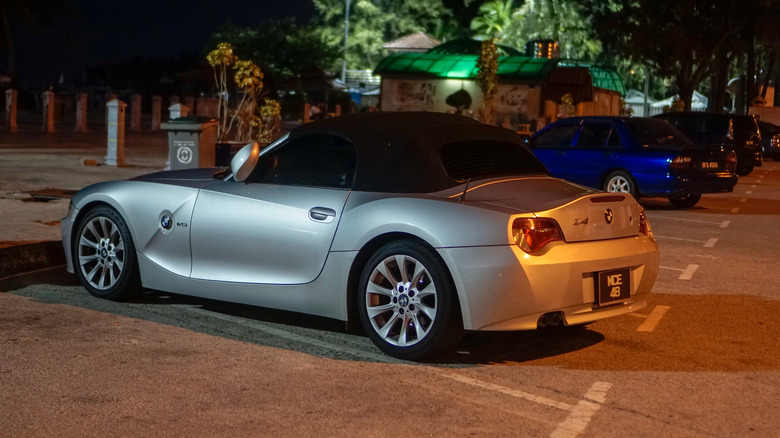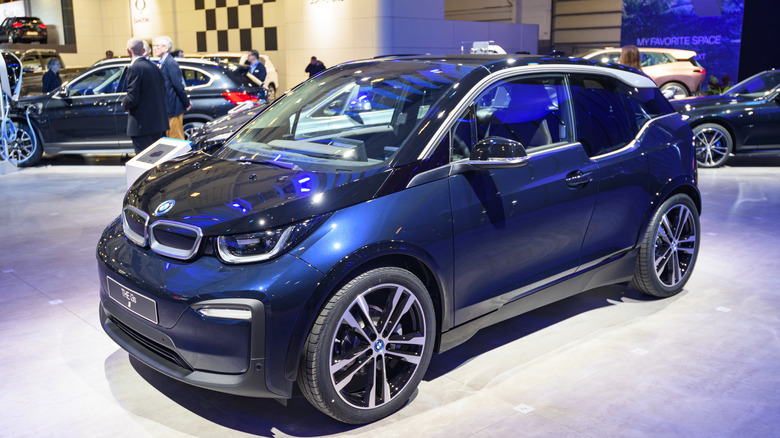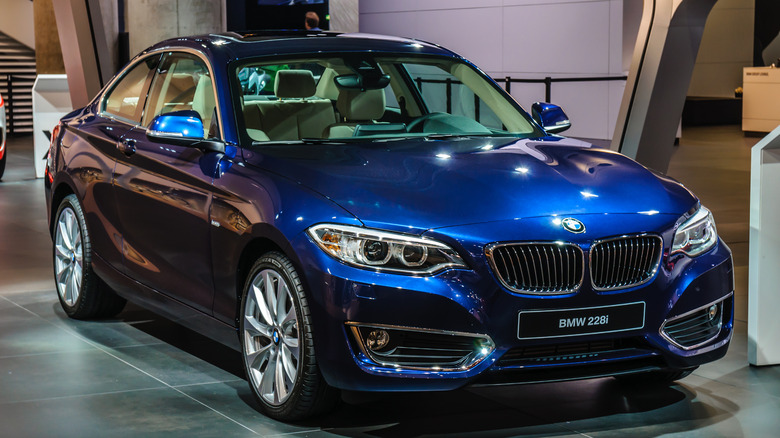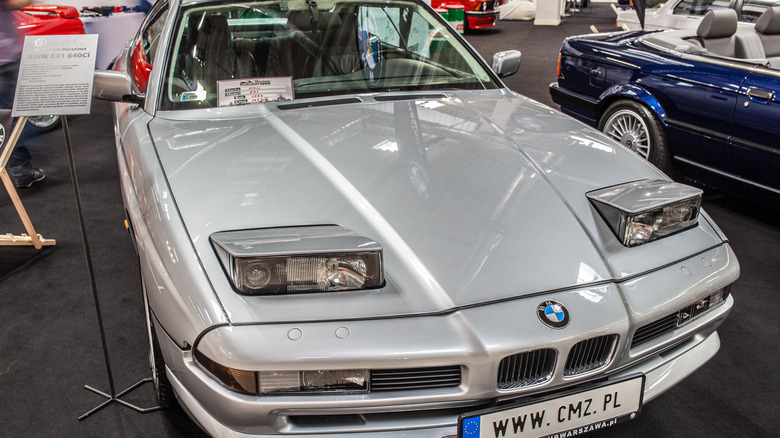5 Of The Most Underrated BMWs Ever Made
BMW has produced some serious gems throughout its time in the automotive industry. BMWs stand alongside many other greats in the automotive world, and this all started in 1916 with the founding of the brand's initial incorporation, Bayerische Flugzeugwerke AG. In 1917, BMW got its name after transitioning from Rapp Motorenwerke, which made aircraft engines.
BMW's emblem came from a combination of Rapp's black-ringed logo and a reversed color combination of the Bavarian region's coat of arms. In this way, BMW still honors the traditions that formed the automaker today.
Throughout the years, BMW has introduced plenty of quality vehicles, from the minimized frame of the 2-Series models to the powerhouse M-Series lineup. In truth, many BMW models are well-known, and BMWs across the board are highly sought after by collectors and everyday drivers alike. But as with any manufacturer, a few fantastic models have rolled off the production line with too little fanfare. The 228i is undoubtedly one of them, but several other BMWs haven't been given their due.
The E36 3-Series
The E36 was the third generation of the 3-Series between 1991 to 1998 and produced 170 brake horsepower through a 24-valve, 6-cylinder engine and a four-wheel drive configuration. This iteration of BMW's long-running 3-Series offering will be familiar to those acquainted with the company. It stacks the headlights in a direct horizontal alignment, framed on either end by the grille and parking lights that subtly curve around the far edges of the vehicle's nose. In the center is BMW's unique two-piece, minimal grille that sits beneath the blue and white logo at the front edge of the hood.
The E36 models are boxier than the generations that would come after and far more edge-dominant than the most recent builds. However, there's something inherently classic about the central ridge that rises on the hood and the faint edge line that rings the car at the door handle level.
Nico DeMattia reports on the E36 offerings for BMW Blog, noting that many "enthusiasts are buying it as a first-time BMW or even a project car" because of the typically low cost on the secondary market. DeMattia suggests angling for a 328is or 328i (and avoiding the M-Series E36s altogether). These models come with a naturally aspirated, 2.8L Inline-six engine that produces 190 horsepower while paired with a five-speed manual transmission. The 328is is a sporty, two-door coupe, while the 328i is laid out as a four-door sedan.
Z4 Roadster (E85)
The Z4 Roadster is a unique addition to the BMW range. It's a two-door convertible introduced in 2002 and has remained in BMW's rotation ever since. The first Z4s were only offered in a roadster configuration, but later a coupe option was added. In the first generation of Z4s (also known as E85s), buyers could opt for five different engine configurations to pair with a five- or six-speed manual or a five-speed automatic transmission. Engine options on these first-generation Z4 Roadsters ranged from an inline-four engine with 152 horsepower to an inline-six with 231 horsepower.
The 2.0i 5MT engine option (producing 152 horsepower) created 148 pound-feet of torque and offered a top speed of 136.7 miles per hour through a rear-wheel drive configuration and a five-speed manual transmission. Conversely, the 3.0i 5AT (five-speed automatic transmission) and 3.0i 6MT (six-speed manual) boosted this top speed to 155 and 155.3 miles per hour, respectively, and each could generate 221 pound-feet of torque.
The Z4 differs significantly in visual style from many traditional BMW aesthetics. The car is somewhat rounded in layout, unlike many of the more straight-edged production models of the time. It retains the dual-grille style in the center of the hood but elongates and slightly curves the edges to fit within the scooped-out aesthetic of the other components. Each door is given a carved look, and the whole vehicle sits incredibly low to the ground, offering the driver a unique road feel.
The i3
BMW's i3 makes the cut regarding underrated models from the German automaker on the strength of its unappealing frame. The car doesn't exude sleek lines or potent speed like many of its Bavarian compatriots, and therefore it often gets overlooked by BMW enthusiasts.
The 2017 i3 model, for instance, achieves a paltry top speed of 93.2 miles per hour. Even so, Top Gear's team reckons that "the BMW i3 is the best small premium EV out there. Or it will be until production ends for good." As of June 2022, it has been on the market for eight years and has continued to dazzle with the confluence of low price and premium build.
We said the 2016 i3 is "a time machine of the first caliber, a glimpse into tomorrow along the lines of what we were once promised in the breathless prose and scintillating images published in the pages of Popular Science magazine." The vehicle is a cross between boxy and bubbly, and the back doors open opposite the front. It's a unique vehicle that remains a fantastic EV for those searching for a high-quality electric option that still brings the DNA of performance driving to the fore. The newest models come with a 42.2 kWh battery that can provide an effective range between 177 and 193 miles on a full charge.
228i
The 228i tends to be overlooked because of its small frame and short production sequence, lasting from January 2014 to December 2016. Newer 2-Series options remain in BMW's lineup, but the 228i should retain a notable place for true BMW lovers.
Writing for eBest Cars, Matthew Sadler considers the 228i (sometimes known as the F22 production model) to be "easily one of the best BMW models we've seen in the last 20 years or so." He notes that the vehicle is incredibly nimble and calls it both "graceful and elegant," far more so than the standard BMW that viewers might be accustomed to when picturing one. This departure from the modern archetype is perhaps the reason for its limited appreciation among BMW enthusiasts.
However, Driving's John LeBlanc calls the 228i Coupe "the last living link to Bimmers of the past." The car is undoubtedly diminutive compared to more often seen 3-Series or 5-Series models, but this doesn't mean the vehicle is deficient. The 228i produces 245 horsepower with a 2.0L four-cylinder engine that's longitudinally mounted. Indeed, the sleek, sporty 2-Series is a throwback to the 1966 1600-2 model that LeBlanc notes was a product of the 1960s Neue Klasse vehicles that "stopped the struggling automaker from going under." The car utilizes a six-speed manual transmission and can achieve a top speed of 155.3 miles per hour. It's a fun car to drive around, combining modern BMW engineering with the brand's historical sentiments.
840Ci
The 8-Series models were introduced as the '90s began. The first BMW 8-Series model was the 850i, released in 1989. These vehicles introduced frameless windows and new electronic features that added popup headlights à la the Mazda Miata, Porsche 924, or Ferrari F40, and other stylistic and functional improvements.
However, this luxurious and enormous vehicle's sales didn't go as planned. The cost was high, and the cars lacked the panache dominating the underlying BMW aesthetic. Even with a potent V12 under the hood, the 850i lacked what the 840Ci would bring to the table shortly after.
In 1992, the 840Ci was introduced with an M60B40 4.0L V8 engine that produced 282 horsepower and 295 pound-feet of torque. The upgraded engine (M62B44) that entered the car in 1995 improved the torque, lifting it to 310 pound-feet with the help of an enlarged 4.4L V8. The 8-Series models only lasted until 1999 and have only recently returned with the G15 generation of BMWs. These '90s 8-Series are a fantastic example of the brand's luxury lineup and powerful builds for those looking for a classic BMW body style. Notably, the 840Ci offers the best value among the pack, along with the car's excellent performance standards — typical prices for the 840Ci range from $10,000 to $18,000.
